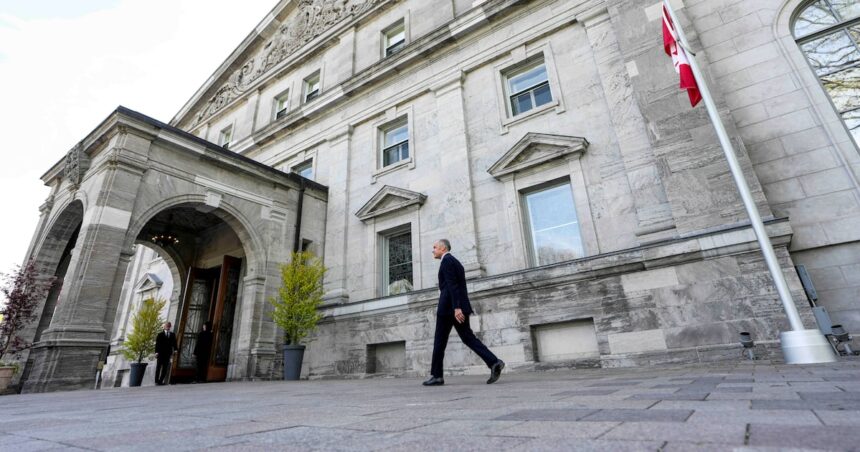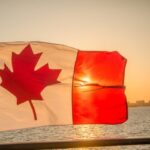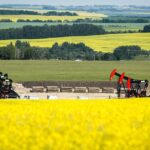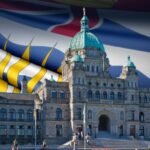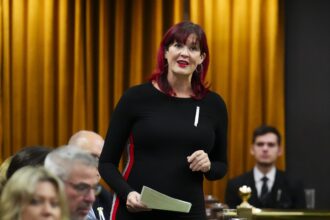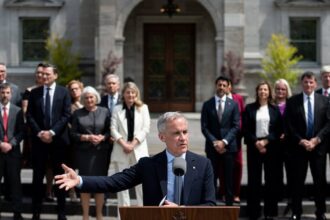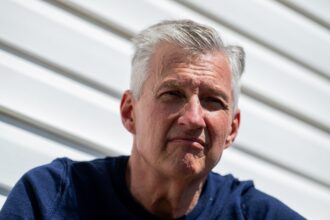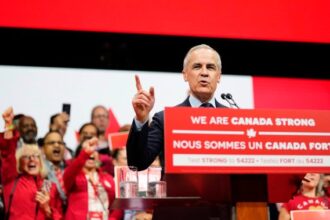OTTAWA — Mark Carney officially became Canada’s 24th prime minister today in a ceremony that signals both a fresh chapter for the Liberal government and the beginning of a high-stakes political gamble ahead of the next federal election.
Under bright morning sunshine at Rideau Hall, Carney took his oath of office administered by Governor General Mary Simon, completing his remarkable transition from global central banker to the highest political office in the country—all without having yet won a seat in Parliament.
“Today begins a new era of Canadian leadership focused on economic renewal and opportunity for all,” Carney declared in his first address as prime minister. “The challenges we face are significant, but so is our capacity to overcome them together.”
The ceremony marked the culmination of a lightning-fast political ascension for Carney, who was recruited by the Liberal Party just three months ago as former Prime Minister Justin Trudeau’s approval ratings continued their steep decline. Trudeau, who announced his resignation last month after nearly nine years in office, attended the ceremony and appeared visibly emotional during the transition of power.
Political analysts note this represents one of the most unusual leadership changes in modern Canadian history. “We’re witnessing something unprecedented—a prime minister who hasn’t faced voters directly and who must quickly establish legitimacy while implementing his economic vision,” said Dr. Eleanor Westbrook of the University of Toronto’s Political Science Department.
Carney’s cabinet, revealed minutes after his swearing-in, reflects strategic calculations aimed at refreshing the Liberal brand while maintaining experienced hands in key portfolios. Most notably, Chrystia Freeland has moved from Finance to Foreign Affairs, while Carney himself will temporarily hold the Finance portfolio—leveraging his background as former Bank of Canada and Bank of England governor.
Polls suggest Canadians remain deeply divided about the leadership change. A recent CO24 survey found 42% of respondents view Carney favorably, with 38% expressing skepticism about his credentials as a political leader despite his economic expertise.
The new prime minister faces immediate challenges on multiple fronts. Housing affordability continues to spiral beyond reach for many Canadians, inflation remains stubborn despite recent moderation, and the Conservative opposition under Pierre Poilievre has maintained a consistent 8-10 point lead in polls for several months.
During his address, Carney acknowledged these hurdles directly: “I understand the anxiety many Canadians feel about housing costs, about their economic future, about the kind of country we’re building. These aren’t just policy problems—they’re kitchen table realities that demand immediate action.”
Carney has already pledged to call a by-election “within weeks” to secure his own seat in Parliament, likely in an Ottawa-area riding considered a Liberal stronghold. His party must also prepare for a general election that constitutionally must occur no later than October 2025, though many expect Carney may seek his own mandate sooner if polling numbers improve.
Business leaders have cautiously welcomed Carney’s appointment, with the Canadian Chamber of Commerce issuing a statement emphasizing “renewed optimism about policy coherence and fiscal discipline.” However, labor organizations have expressed concern about potential austerity measures, with the Canadian Labour Congress urging the new government to “prioritize workers over Bay Street interests.”
As ceremonial formalities concluded and Carney departed for his first cabinet meeting at the Prime Minister’s Office, the weight of expectations was palpable. For a man who guided monetary policy through the 2008 financial crisis and Brexit uncertainties, his greatest challenge may be navigating the messy, unpredictable terrain of democratic politics—where economic expertise alone won’t guarantee success.
The question now becomes whether Carney’s technocratic approach can translate into political victory when Canadians eventually cast their ballots. For a Liberal Party desperately seeking reinvention after nearly a decade under Trudeau, everything hinges on the answer.

